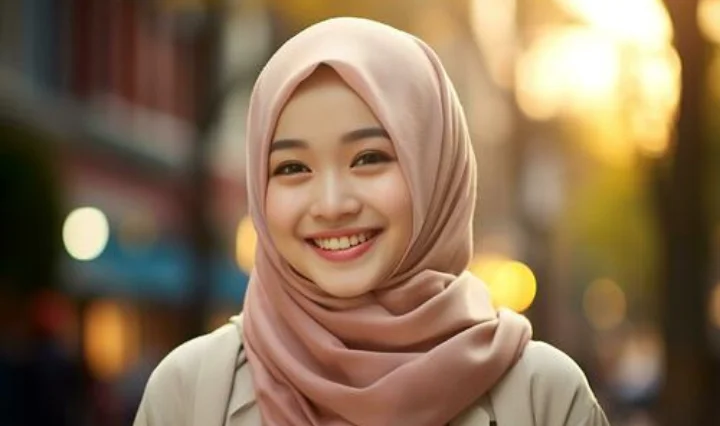In a global in which cultural practices and hijabhoojup traditional apparel are frequently seen via the lens of either conservatism or exoticism, the “Hijabhoojup” emerges as a terrific example of the interplay between background and modern style. This article explores the Hijabhoojup—a term that amalgamates the words “hijab” and “hoojup,” representing a unique and evolving factor of modest fashion.
Origins and Cultural Significance
The Hijabhoojup has its roots in diverse cultural practices, where modesty and identity are deeply intertwined. Originating from areas with rich textile traditions, the Hijabhoojup symbolizes now not simply modesty but also a part of cultural heritage.
Historical Context
Historically, modest dress has been an enormous part of many cultures, in particular in the Middle East, South Asia, and parts of Africa. The Hijabhoojup, while a contemporary term, draws from this historical exercise of modest apparel. It integrates the idea of the hijab—a traditional headband worn by Muslim women to cover their hair and neck—with factors from other regional garments, resulting in a flexible and culturally significant piece.
Cultural Variations
Different areas interpret the Hijabhoojup in wonderful methods. For instance, in South Asia, it might contain elaborate embroidery and colorful hues similar to the area’s traditional textiles. In assessment, within the Middle East, the Hijabhoojup may function with easier designs with emphasis on cloth quality and draping techniques. These versions highlight the adaptability of the Hijabhoojup to special cultural aesthetics and norms.
The Role of the Hijabhoojup in Modern Fashion
The Hijabhoojup stands at the intersection of culture and modernity, attractive to folks who desire to honor their historical past while embracing cutting-edge patterns.
Adoption through Modern Designers
Modern fashion designers have embraced the Hijabhoojup, incorporating it into their collections to cater to a developing marketplace for modest fashion. Brands throughout the globe have started to recognize the ability of the Hijabhoojup, mixing traditional designs with current cuts, fabrics, and patterns to create garments that resonate with more youthful generations seeking modesty and fashion.
Fashion Versatility
The versatility of the Hijabhoojup allows it to be worn in various settings, from formal occasions to informal outings. Its design can vary from stylish and sophisticated to simple and understated, making it an appropriate desire for distinctive occasions. This adaptability contributes to its reputation amongst ladies who recognize modest style but do now not need to compromise on personal style or modern traits.
Cultural Identity and Personal Expression
For many ladies, the Hijbhoojup is more than simply a bit of garb; it’s far a powerful image of cultural identity and private expression.
Identity and Empowerment
Wearing the Hijabhoojup permits ladies to explicit their cultural and nonsecular identities with pride. It serves as a visual representation of their beliefs and history, supplying an experience of connection to their roots. Additionally, the Hijabhojup empowers women to make a statement approximately their values and individuality in an international that regularly seeks to homogenize personal identities.
Challenges and Misconceptions
Despite its importance, the Hijabhoojup is not without challenges. Misconceptions about modest style and the hijab can result in misunderstandings and stereotypes. However, the increasing visibility and acceptance of the Hijabhoojup in mainstream style are helping to conquer those misconceptions and sell an extra nuanced understanding of modesty and cultural expression.
Sustainability and Ethical Fashion
The rise of the Hijabhoojup is likewise part of a broader trend toward sustainability and moral fashion.
Sustainable Practices
Many designers and brands generating Hijahoojups are devoted to sustainable practices, which include the usage of eco-friendly fabrics, supporting truthful alternatives, and decreasing waste. This aligns with growing consumer demand for a style that not simplest appears accurate but is additionally precise, addressing troubles of environmental effect and social duty.
Ethical Production
Ethical production of the Hijabhojup often includes collaboration with local artisans and groups, retaining conventional craftsmanship while presenting truthful wages and operating conditions. This technique supports the livelihood of artisans and contributes to the renovation of the cultural and historical past through the continued manufacturing of conventional textiles and designs.
Future Trends and Innovations
As the Hijabhojup continues to conform, it’s miles possible to steer and be influenced by broader style trends.
Technology and Innovation
The integration of technology into style, which includes using clever fabrics and virtual layout gear, could lead to new and modern interpretations of the Hijabhooup. These advancements may want to enhance the capability, comfort, and aesthetics of the garment, making it even greater appealing to various target markets.
Cultural Fusion
Future tendencies can also see the Hijbhoojup incorporating elements from various cultures and style actions, creating a fusion of styles that replicate the increasing number of interconnected and multicultural international. This should result in even extra various and innovative expressions of the Hijaboojup, appealing to an international audience in search of unique and meaningful style selections.
Conclusion
The Hijabhoojup represents a harmonious combo of culture and modernity, providing a unique manner for women to specify their cultural identity whilst embracing cutting-edge fashion.
As a symbol of modesty, empowerment, and sustainability, the Hijabhooup stands as a testament to the long-lasting relevance of cultural apparel within the present-day international. Its persistent evolution and developing popularity underscore the dynamic nature of favor and the capability of conventional garments to adapt and thrive in a swiftly converting global panorama.
